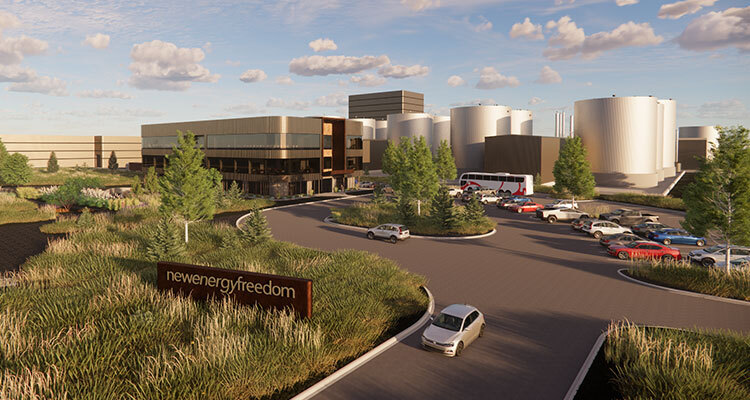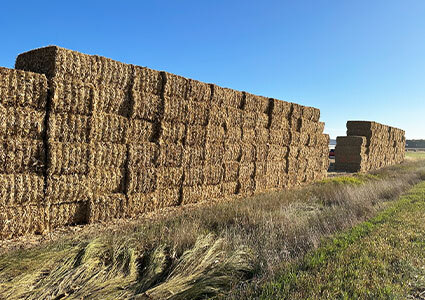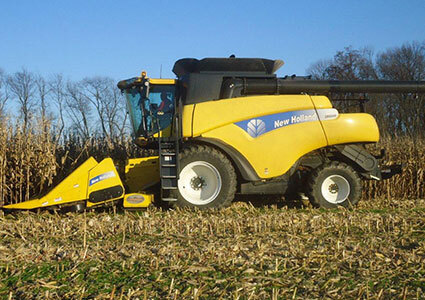
Discover New Energy Blue’s revolutionary ethanol solution that could combat climate crisis
While sustainability continues to dominate several industry-wide conversations, perhaps the most pressing question is whether climate crisis is too far gone, or if there are solutions out there to reverse humans’ damaging impact on the planet.
What if we told you that New Energy Blue has a solution that can not only slow down our impact on the environment, but also has the potential to transform almost every aspect of our daily lives? Thanks to a worldwide shift in the urgency of carbon reduction, New Energy Blue is delivering ‘a green carbon cure to heal our blue planet.’
With its first biomass refinery under construction, New Energy Blue is poised to deliver a new generation of bioenergy. Boasting the potential to change life as we know it, clean technology can replace petroleum products from gasoline and plastics to road pavements and healthy snacking.
Green ethanol industry
Having worked in the ethanol industry for 27 years, New Energy Blue’s CEO, Thomas Corle, played a key role in developing the green ethanol industry in the US, and now his team are scaling up that industry. “My focus has always been on the next generation,” Thomas begins. “I ended up purchasing the technology from the developers in Denmark, and along with several team members, I’ve worked with their research and development (R&D) and operations teams on proving its efficacy and commercial reliability over the past decade. It’s essential to what we’re designing and building in Iowa and across the American Midwest.
“To put it simply, the technology enables us to process biomass to produce clean renewables like lignin, taking out the sugars, nutrient value, metals, and ash content to leave a clean burning fuel. My focus is on producing biomass using feedstocks other than corn. Unlike oil refineries, we use raw materials that are grown and harvested, not drilled and extracted, meaning our carbon is drawn from the air and either sequestered into the products produced or recycled and drawn into the plants that grow into next year’s feedstock.
“Whereas conventional biofuels are produced using corn kernels, we’re the first organization to convert corn stover (the straws and stalks left behind in farmers’ fields after the annual harvest) into liquid biofuel and a bio-solid at a large commercial scale – and, of course, do it sustainably. The corn stalk is the best solar panel in the world; it takes in the sun, captures the carbon dioxide, and allows us to harvest the sugars within that plant and reuse those carbons. We’ve also engineered wheat straw conversion, sugar bagasse leftover from the sugar industry, and palm oil bunches, the leftovers from the palm industry that are otherwise a pollution.
 Optimized refining
Optimized refining
To give some background understanding, greenhouse gases in the troposphere, primarily carbon dioxide, trap some of the sun’s radiation that would otherwise be reflected into space, causing the planet to warm up. Plants then absorb carbon dioxide, store the sun’s energy as sugar, and release oxygen, meaning America’s Midwest is the ideal location for biomass conversion, as it produces 115 million acres of wheat and corn every year.
Every five years the US Department of Energy (DOE) produces the Billion Ton Report, which concludes that the US has the potential to produce at least one billion dry tons of biomass resources on an annual basis without adversely affecting the environment. In other words, that’s enough renewable feedstock to feed 1800 biomass refineries that annually process 550,000 tons each.
“On the process side, we’ve scaled up commercial operations, which are currently focused on Iowa, one of the world leaders in corn production,” Thomas explains. “Here, we see more than 200 bushels per acre, as well as five tons of corn stover from the harvest. We’ve also established a special system that allows us to aggregate efficiently, manage costs, reduce dirt, and lower moisture content to optimize refining.
As well as being a cleaner process than oil refineries, the biomass refineries also use significantly less water. “Our biofuel is a pure alcohol made from cellulose called ethanol and is kinder to the environment than gasoline, which contains carcinogens toxic to groundwater,” Thomas elaborates. “Instead of using fresh water in our processing, our enclosed-loop design captures and recycles the moisture from the biomass, which can also produce a surplus of clean water for other purposes.
“For the last ten months, our team of 80 engineers have been working on our first facility in Mason City, Iowa. The engineering is now being completed and we’re working with one of the largest world banks, as well as the USDA and Danish loan guarantee programs, to help secure final funding. Once complete, the site will be capable of producing between 16 million and 20 million gallons of ethanol every year, which will be reduced from 275,000 dry tons of corn stover.”
Perennial energy grasses
It’s crucial to note that the process provides a mutually beneficial relationship for both local farmers and biomass refineries. “Although it might seem like we’re taking away from the fields, Iowa’s corn population is so dense that it benefits farmers to remove three of the five tons of stover per acre because it can increase the next year’s yield. Also, most of the nutrients needed in the soil are in the bottom part of the plant and in the cobs, which we leave on the field. We take only the top part of the plant and the leaves where the sugars are, and, of course, farmers also get a very nice extra income for working with us.
“The process is advantageous beyond the extra income, as our farmers’ program allows them to play a bigger role in the industry and improve farming practices for the future,” he continues. “For the figures I’ve outlined, it takes around 150,000 acres of land, which relies on about a 20 percent farmer participation rate within a 30-mile radius of each of our refineries. To achieve this, we’re offering farmers ownership units and educational services, so that they can grow the biomass side of their business alongside us. By working together, we can ultimately scale up the industry much quicker.”
The applications of New Energy Blue’s products are far-reaching. From automotive fuels and lubricants to road binders, textiles, and even sneakers, many of the products we buy or use every single day can be produced from bio-based materials. “To be clear, we’re not an ethanol plant, but we produce ethanol molecules,” Thomas clarifies. “We plan to produce everything that an oil and gas refinery is producing today, but from waste feedstocks and grasses.
“We’ve recently signed a huge contract with Dow Chemical (Dow) to provide ethanol from our sites in the Midwest to Port Lavaca, Texas, where we’re developing an ethylene project. We’ll be shipping around 40 percent of our ethanol to their ethanol-to-ethylene unit, which uses a specific catalyst to produce poly-grade ethylene. This will then be used to produce bio-based plastics at one of Dow’s four facilities that are along the Gulf Coast pipeline.
“Once it’s at ethylene, it can be used for almost any of Dow’s thousands of products, including cosmetics and textiles,” Thomas reveals. “Because of our clean process, we can also turn part of our sugars into xylitol, for probiotics or prebiotics. Our process can take food-grade, hemicellulose sugar, or C5 sugar as it is, and separate it upfront to produce xylitol, a non-fat sugar, which gives us the potential to create healthier snacks.
“We’ve also tested our process to utilize energy grasses in arid regions that can no longer grow food produce. Research shows enormous potential for carbon sequestration and improved water retention in soil restored by introducing perennial energy grasses. Our process can help communities adapt, planting and harvesting fast-growing, drought-tolerant grasses that can restore land to the point where food crops can grow bountifully again. With many countries thinking about food security, this is what government organizations are interested in, as it can restore previously arid land.”
Revolutionary change
However, New Energy Blue’s operations are currently consumer-driven with no widespread governmental support on biobased chemicals; there is only policy on auto and jet fuels, at present. “Consumers are becoming aware of the environmental impact of what they’re buying, but governments need to pay more attention,” Thomas proposes. “Chemical companies, which are striving to meet reduction targets, are taking note, but we need widespread policy to catch up and pull these projects through. By creating products made from atmospheric carbons, as opposed to fossil carbons, we can slow down or even reverse climate crisis.”
As our conversation draws to a close, Thomas’ thoughts turn to the future: “We’re hoping to build five sites over the next six years and we’re already looking at maybe seven shovel-ready sites in Iowa and Nebraska, all of which have plenty of feedstock around and logistical advantages. We’re also planning the New Energy Biomass Technology Campus at the Freedom project in Mason City to continue the research and development of downstream products. Here we’ll also house New Energy Farmers and train our future workforce.
“We see a future not just in the US, where our bioenergy could replace 23 metric tons of oil-derived polyethylene, but across the globe. We’re constantly looking at global funding opportunities to replicate what we’re doing in Iowa. With biomass aggregation spending around $20-million-to-$40-million a year to support local farmers and the whole project resulting in more than a $1 billion impact on the local economy, we can empower and revitalize communities wherever we build. That’s what my focus is; to drive revolutionary change on a world dominating platform, starting with the delivery of the clean, green American dream.”